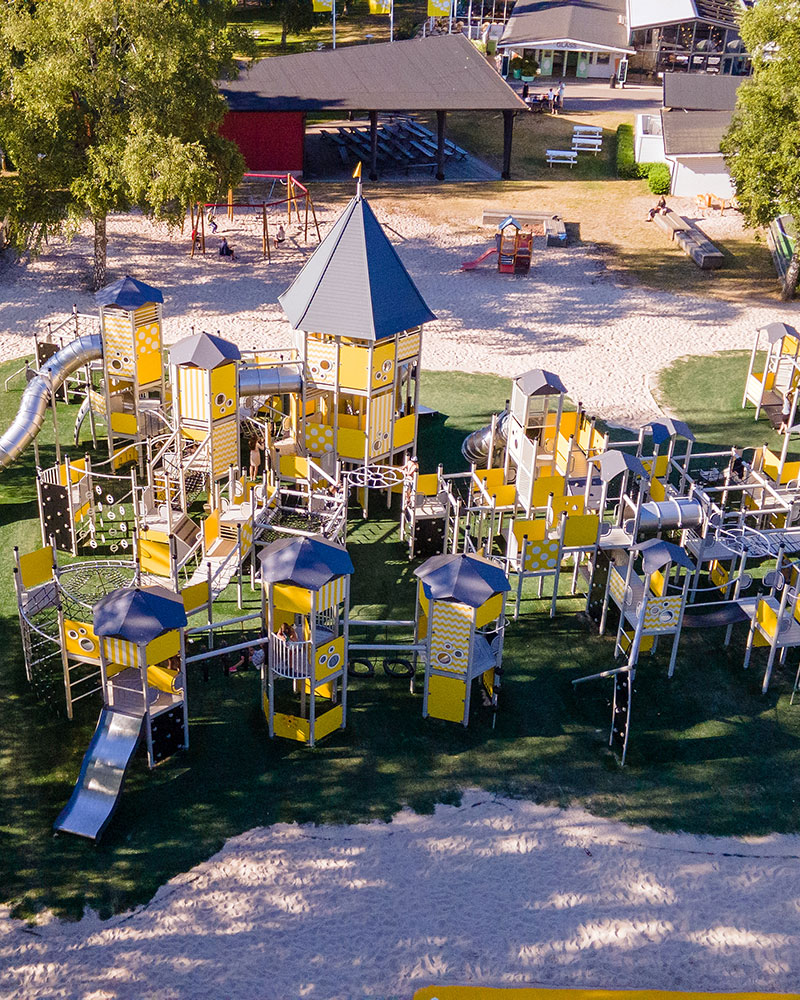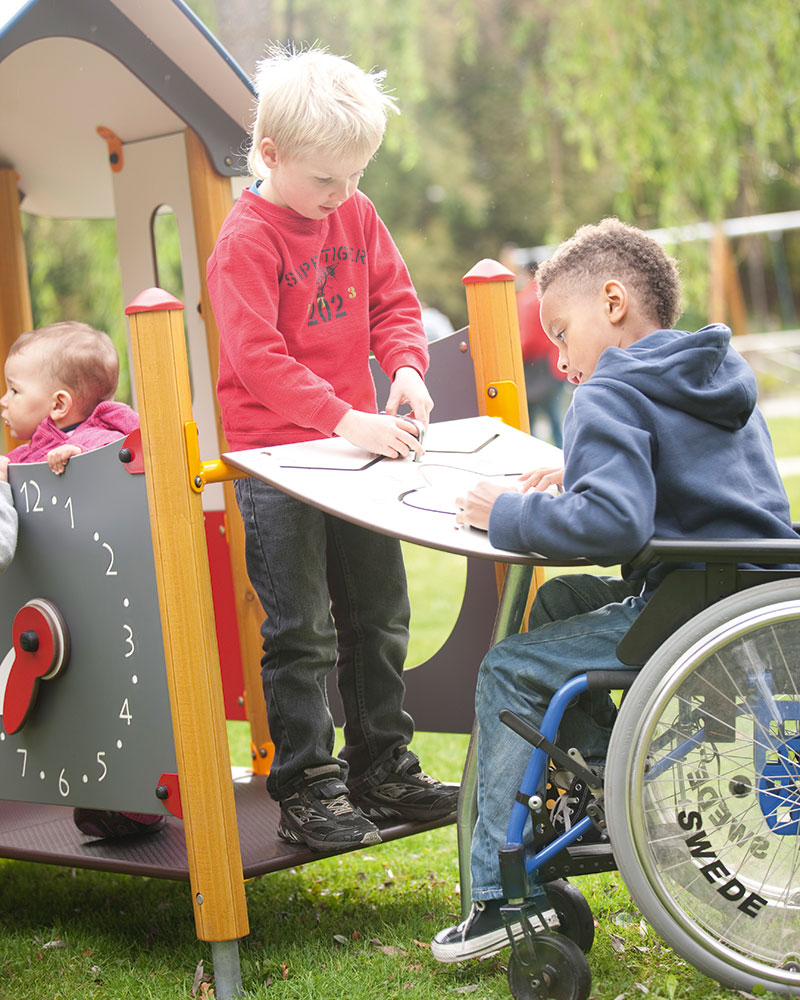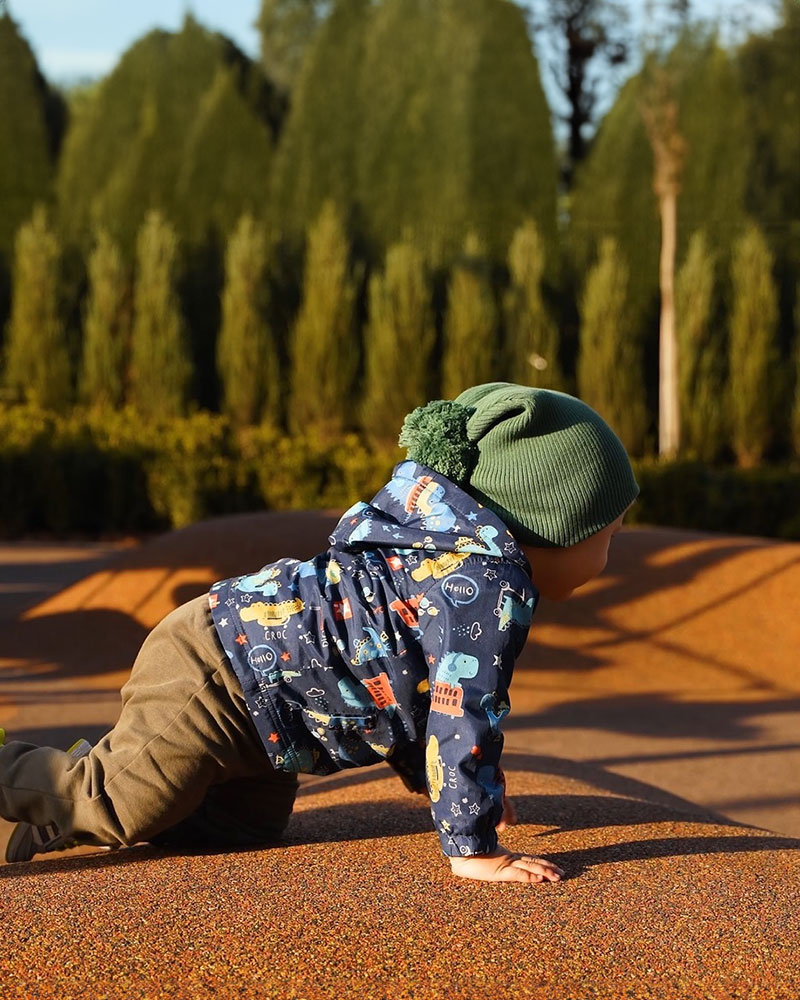Planning tips and inspiration when designing inclusive playgrounds
A creative designer, passionate about inclusive playgrounds, shares her top tips for creating meeting places that can be used by everyone.
From a creative designer's perspective
Helen Bergander, Creative Designer
Helen Bergander is a creative designer dedicated to transforming playgrounds into inclusive meeting places for everyone. Her passion and expertise in accessibility make her an invaluable asset in customer-specific projects, ensuring that playgrounds are welcoming and accessible to all.

Accessibility is not just about wheelchair users
Accessibility extends far beyond wheelchair users, encompassing a wide range of disabilities that must be considered in playground design. It's essential to ensure there is something for everyone, recognizing that not everyone can do everything but everyone should have the opportunity to participate.
Designing a playground for all
When planning a playground, consider varying degrees of difficulty to make the entire space exciting, flexible, and challenging. For example, in designing an obstacle course, children with ADHD benefit from physical, fast-paced activities, while children in wheelchairs also want to test their limits but in different ways. One solution could be to create two adjacent obstacle courses: one at ground level with various obstacles for wheelchair users, and another with balance and climbing opportunities.
Balance exercises are particularly beneficial for children with hearing loss, who often struggle with balance. Courses with good contrast markings are easier for children with visual impairments. This approach allows children with different needs to play together, side by side.
Creating enough space for everyone
Children with intellectual disabilities often play later in life, so the space needs to accommodate adult bodies and be easy to navigate and understand. Both tracks should be enjoyable for all children, regardless of their abilities.
By incorporating multiple levels and varied activities, we encourage inclusive play where all children, with or without disabilities, can engage and have fun together.
Helen's top 5 accessibility tips for playgrounds
1 Activity and experience
When designing a playground, focus on the activities and experiences it offers rather than just the products and equipment. Consider how children will balance, climb, slide, swing, move, meet, rest, spin, bounce, and jump. These actions create a dynamic and engaging environment that encourages physical activity, social interaction, and imaginative play. By prioritizing the experiences, you ensure that the playground is inclusive and enjoyable for children of all abilities.
2 Stimulate the senses
Incorporate features that engage multiple senses to enhance the playground experience. Use elements that encourage children to look, listen, and feel. Visual attractions, auditory components like musical instruments, and varied tactile surfaces make the playground more exciting and support sensory development for all children.
3 Levels of difficulty
Incorporate varying levels of difficulty in play features so that everyone can participate and gradually challenge themselves. This approach allows children to engage in similar activities, enhancing their skills and confidence over time.
4 Space
Create enough space around play equipment to accommodate everyone, including parents or guardians in wheelchairs who want to play with their children. This ensures that all individuals can comfortably and safely engage in the playground activities.
5 A meeting place for everyone
Instead of making targeted additions that single out individuals, design the playground as a stimulating, flexible, and creative meeting place for everyone. This approach promotes inclusivity and ensures all children can enjoy the space together.
Designing an inclusive playground
Designing for inclusion requires thoughtful integration of play values and accessibility. The following sections highlight key elements to consider when creating an inclusive play space. This guide is flexible, allowing designers to prioritize certain aspects and develop custom strategies to best meet users' needs.
Explore the pages below to help you plan and design an inclusive playground.










